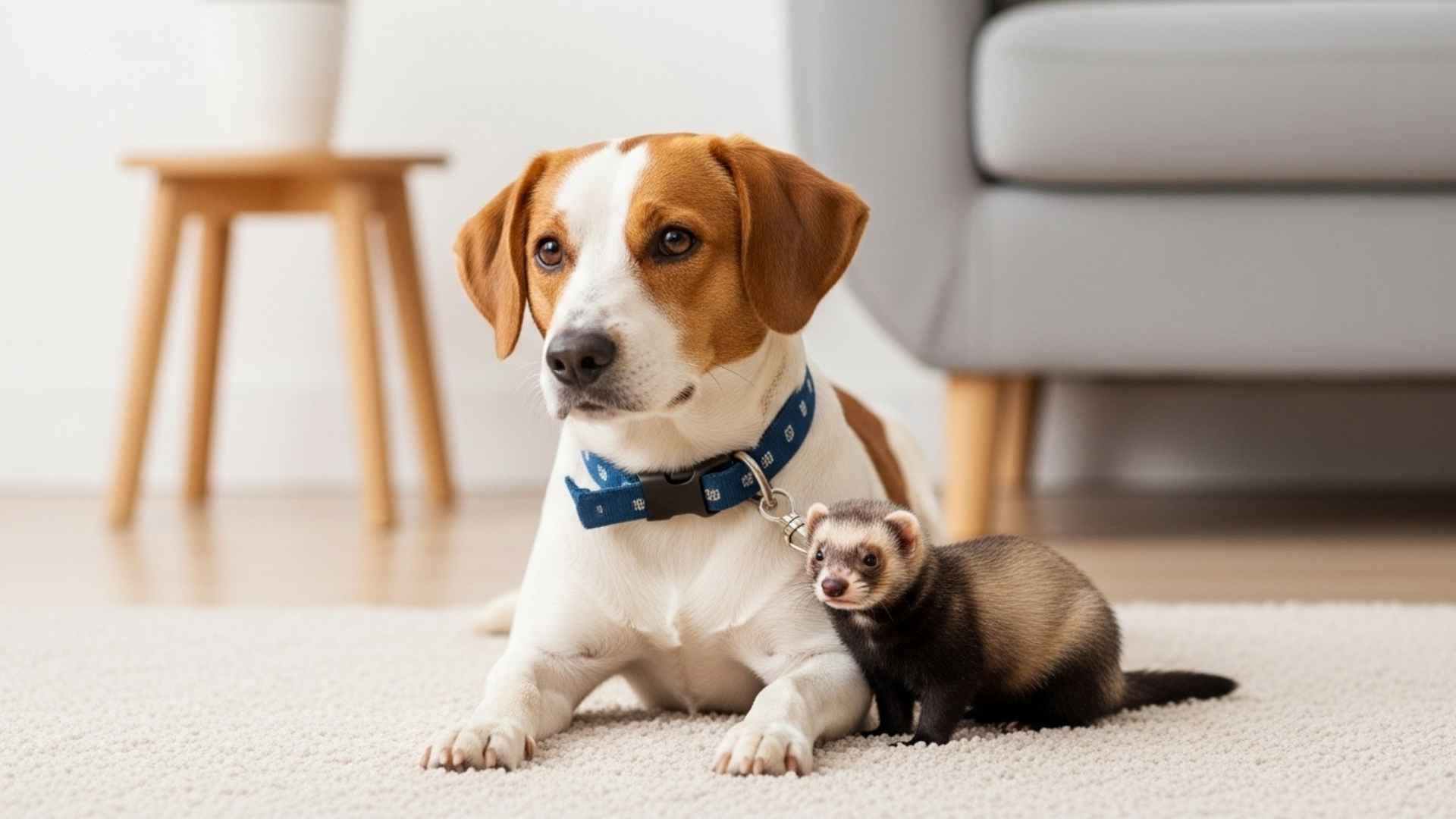You deserve the peace of watching your dogs rest on the run while your ferret tiptoes past, both at ease. Some dog breeds stay friendly with ferrets in homes naturally create this harmony, while other breeds need more guidance. The right match can give you that peaceful coexistence where two animals live together successfully.
Finding the perfect ferret and dog partnership comes down to understanding breed tendencies, reading body language, and creating safe spaces where both pets can thrive. When you choose wisely, your house becomes a sanctuary where ferrets, dogs, and cats can share the same household without fear.
Dog Breeds That Stay Friendly With Ferrets in Homes
1. Golden Retriever
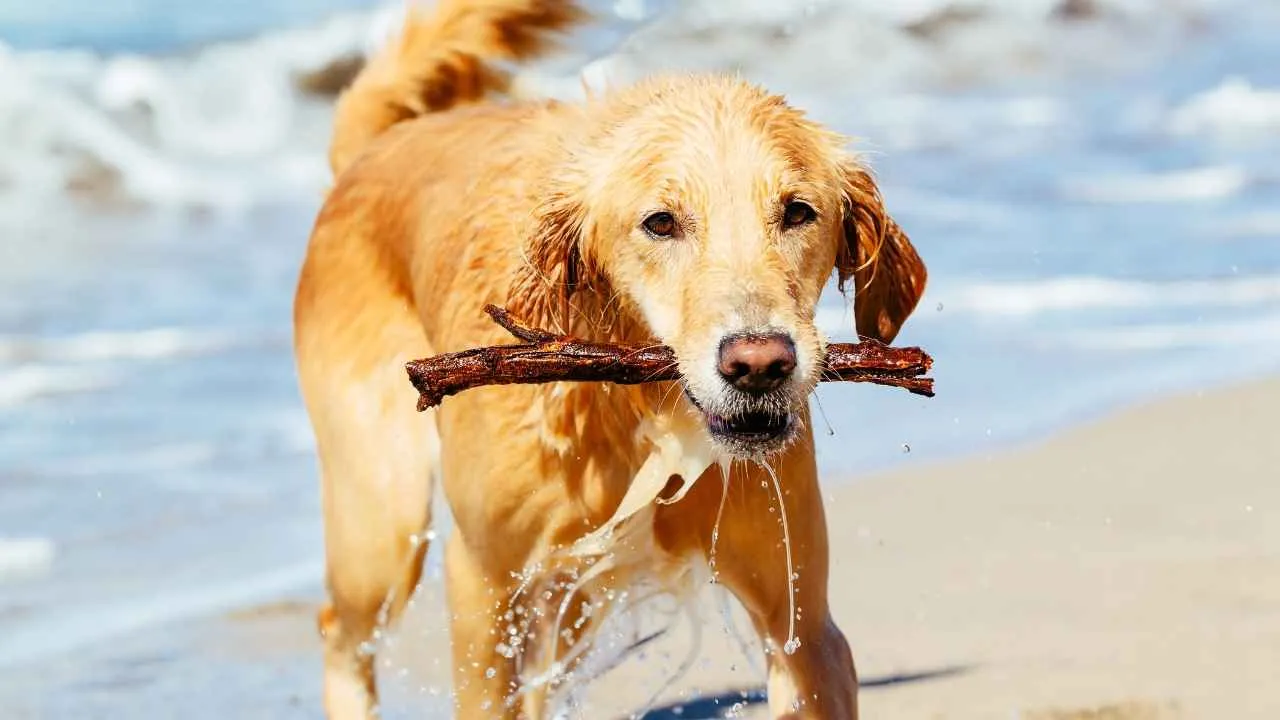
Golden Retrievers carry a reputation for soft mouths and are the prime example of loyal dogs, making them natural candidates for ferret friendship. Their moderate prey drive responds well to training.
However, size can still spell danger for smaller animals when excitement spikes. One mistimed roll can seriously hurt a baby ferret or other small pets in your home.

These dogs have broad skulls and sharp teeth built for retrieving, not to kill. When they stay relaxed, their temperament remains gentle. The breed characteristics favor calm interactions over aggressive behavior.
Safety measures
Lay down a textured mat around the ferret’s cage (paws dislike rubber nubs)
Teach a default sit-and-watch command whenever a ferret appears
Keep first meetings with the ferret under five minutes, doubling the window every other day
Redirect rough tail moments with toys instead
Golden Retrievers respond well to food rewards during training. They live to please their family members, making them easier to train around animals like guinea pigs, cats, or rabbits. Watch for signs of over-excitement and acknowledge them quickly.
2. Labrador Retriever
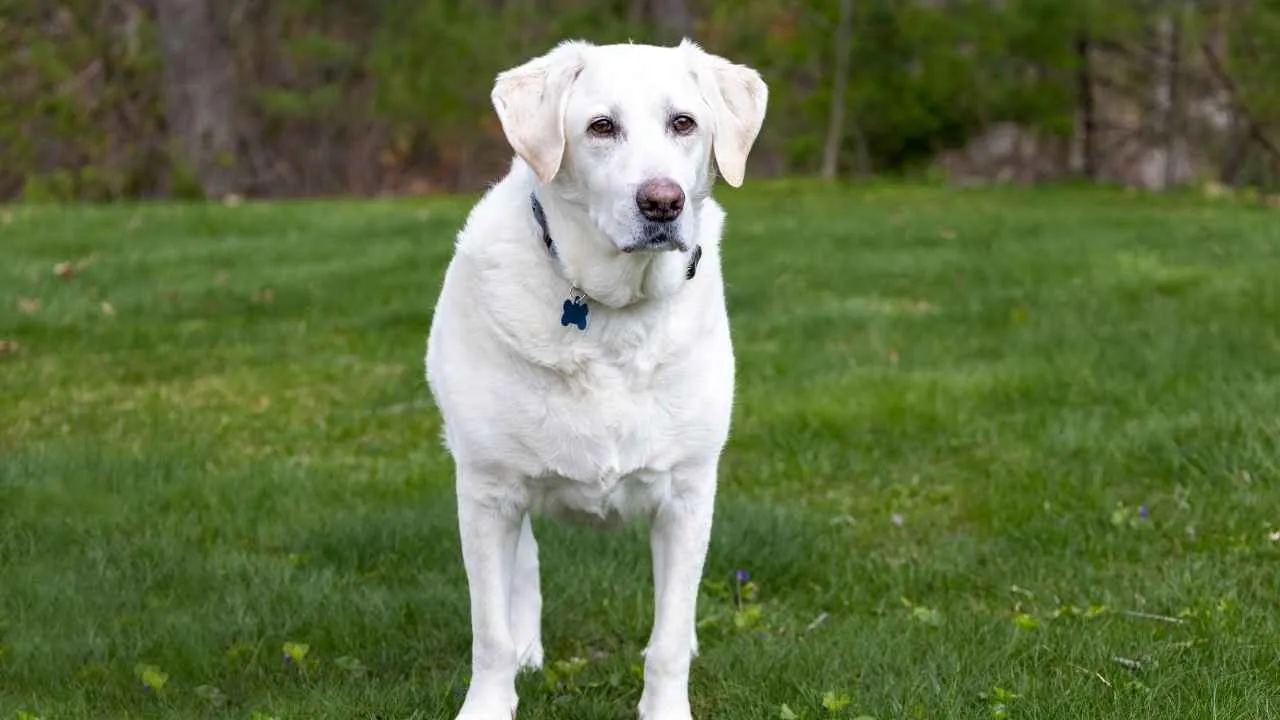
Purina said it best: friendly to the core, a Labrador often wags first and asks questions later. That broad grin hides a retriever’s quick pounce reflex, though. Your success hangs on channeling a Lab’s devotion to food and family life into calm patience.
Labs respond instantly to food-based rewards, making positive reinforcement natural during real interactions. Their laid-back temperament turns mildly crazy behavior into gentle sniffing rather than hunting once rules sink in.
They genuinely want to be buddies with every creature, including smaller animals that smell interesting to their sensitive nose.
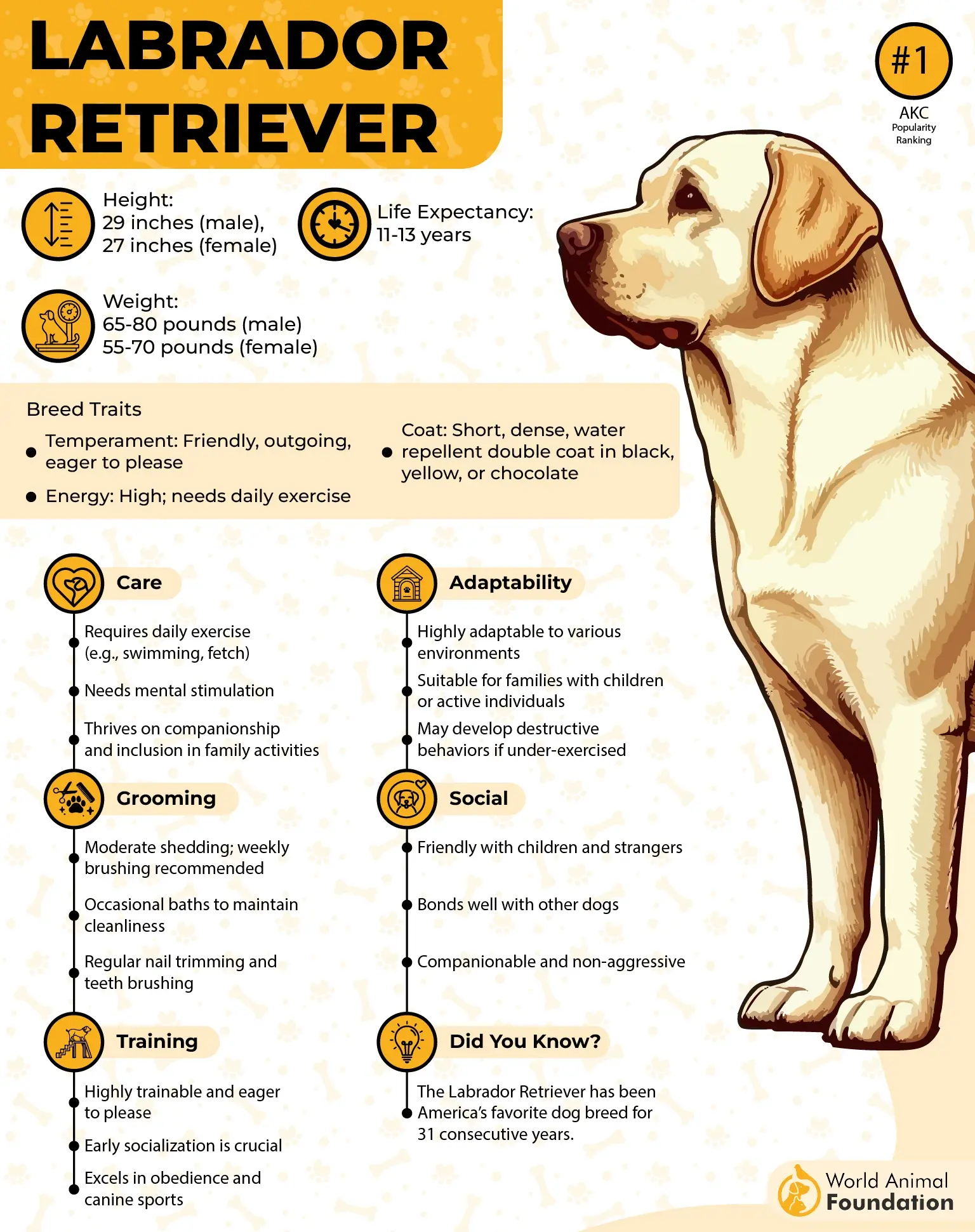
Safety measures
Park treats near the ferret’s cage for rewarding calm eye contact
Limit indoor energy after meals (full bellies slow sprint speed)
Place a low stool beside furniture as a quick escape route for the ferret
Rotate scent-work games weekly before the dog and ferret interactions
Labs can live peacefully with cats, ferrets, and other creatures when properly introduced. Their size requires careful supervision around a new ferret or kitten.
These dogs hurt less than terrier breeds, making them safer choices. You must watch their body language and determine when excitement levels rise too high.
3. Poodle
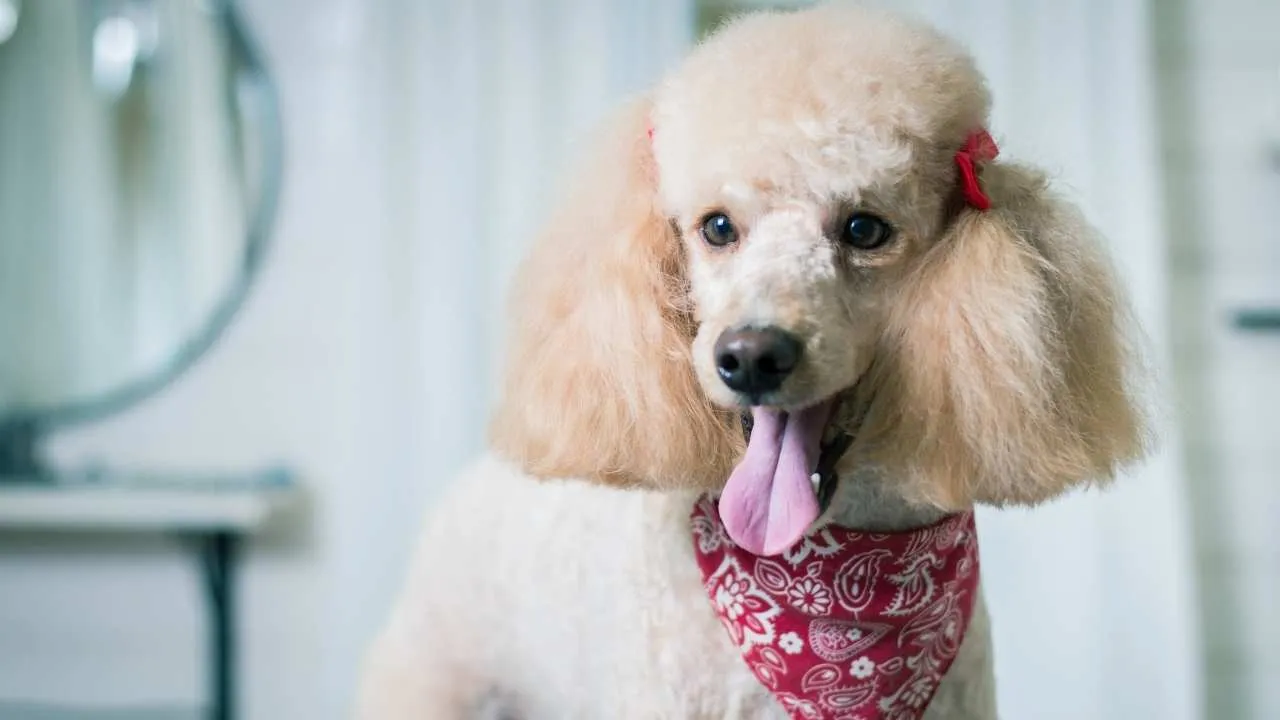
Picture a silky lap-dog who’d rather curl beside family than hunt, yet still perk up at every rustle. The Poodle balances warmth with alertness, making it one of the most naturally compatible breeds for ferret households.
Their low prey drive keeps their curious behavior gentle rather than grabby. The feather-light frame protects animals from crushing injuries. Poodles love learning tricks that provide distractions from ferret activities around the cage and litter box areas.
Safety measures
Brief hallway meeting twice daily on neutral ground with the ferret
Reward soft sniffs with quiet praise and tiny food treats
Provide small fleece-safe squares where ferrets can retreat
The dog and ferret should never be unsupervised
Poodle dogs show mild scent interest, typically sniffing then walking away. Ferret smell rarely sparks an obsession with the breed. They can live peacefully with ferrets, cats, birds, and other small animals when properly socialized. Unlike large dogs, these dogs prefer companionship to hunting behavior.
4. Maltese
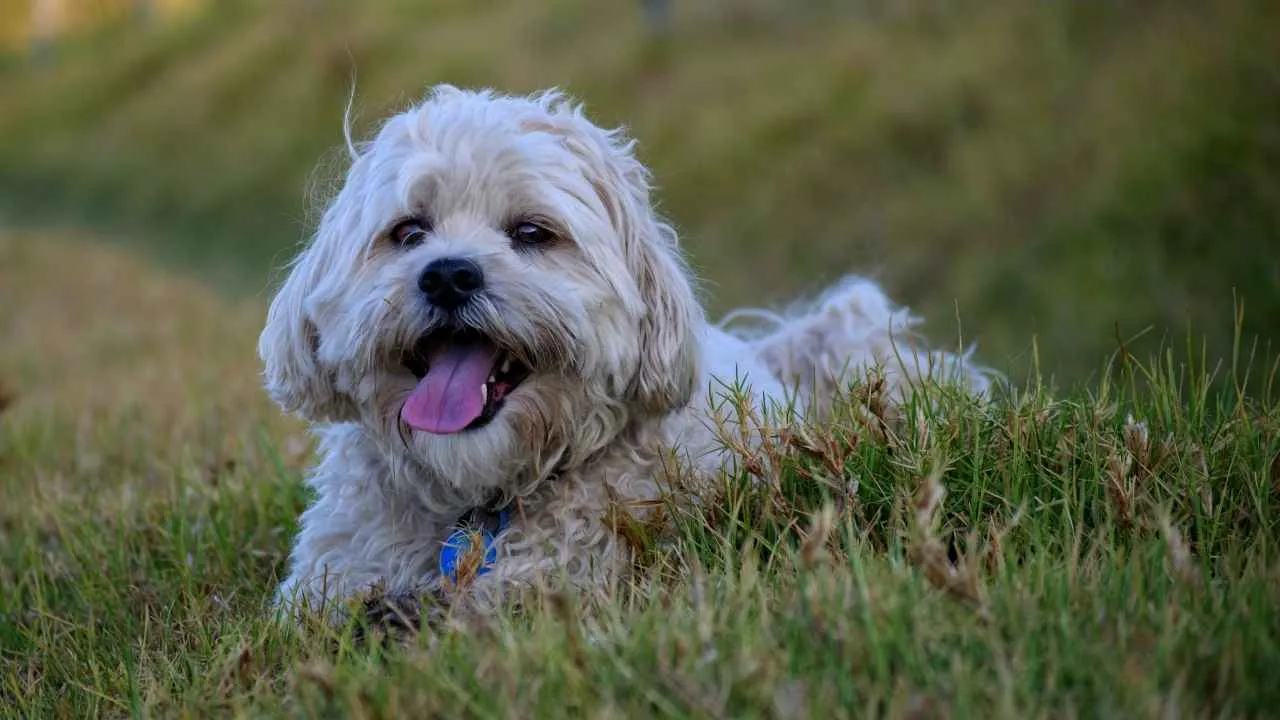
Light as a loaf of bread and just as soft, the Maltese trots through living rooms like living decor. Under that silky coat lives a bold spirit that once helped hunt rodents for work, but their first move with a new pet is usually a curious head tilt, not a lunge.
Their tiny frame lowers the odds of crushing smaller animals significantly. They’re keen to please and quick to learn gentle behaviors. Maltese dogs enjoy short play bursts that match ferret energy perfectly. Unlike predatory animals, they rarely show aggression toward other species in the house.
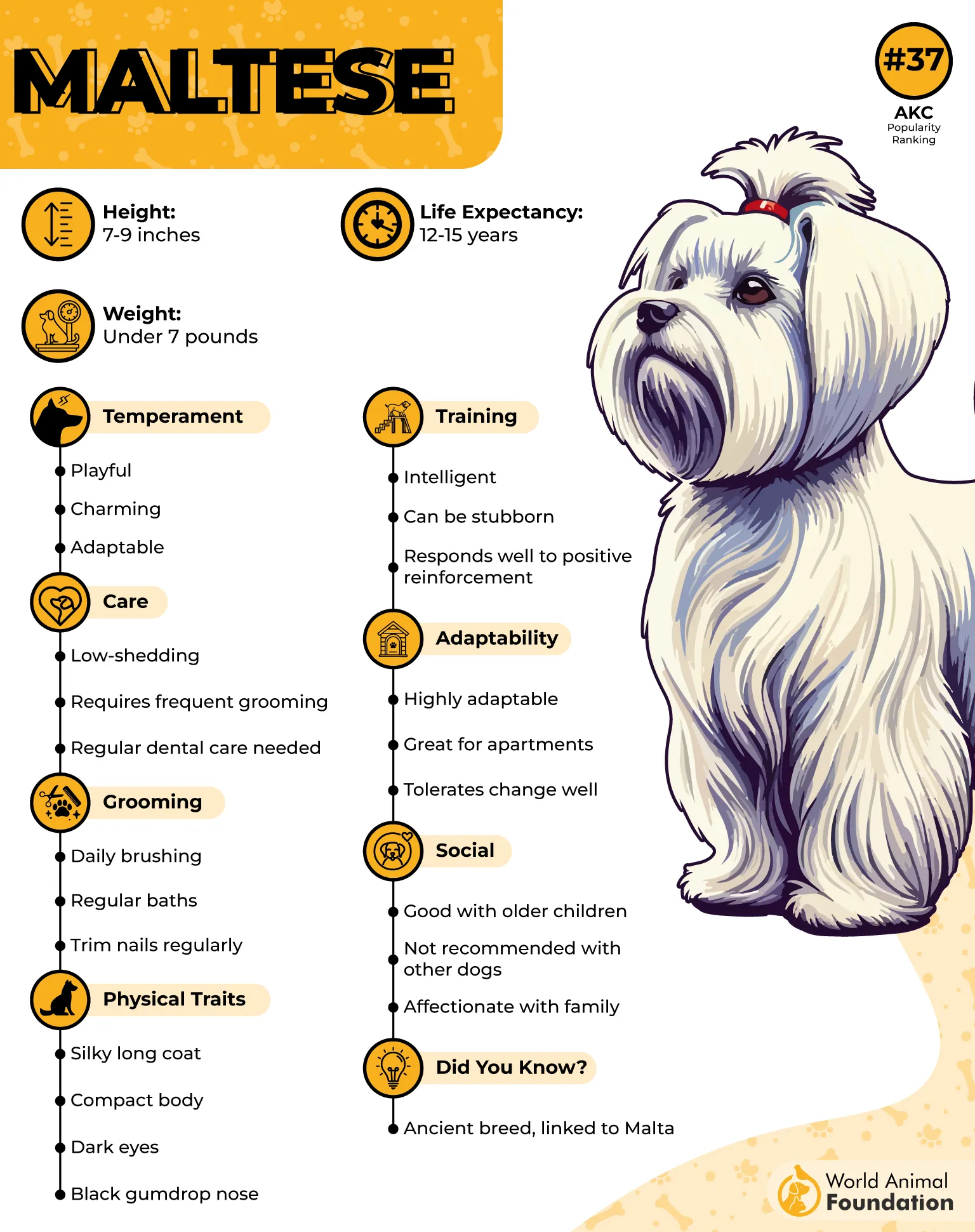
Safety measures
Keep the ferret enclosure on a sturdy table at eye level
Reward calm sitting whenever ferrets scamper past
Schedule daily mixed species time in five-minute slices initially
Offer parallel play with separate toys for each animal
These dogs live well with ferrets, cats, and other pets when socialized early. Their claws and teeth pose minimal threat to ferrets due to their gentle nature.
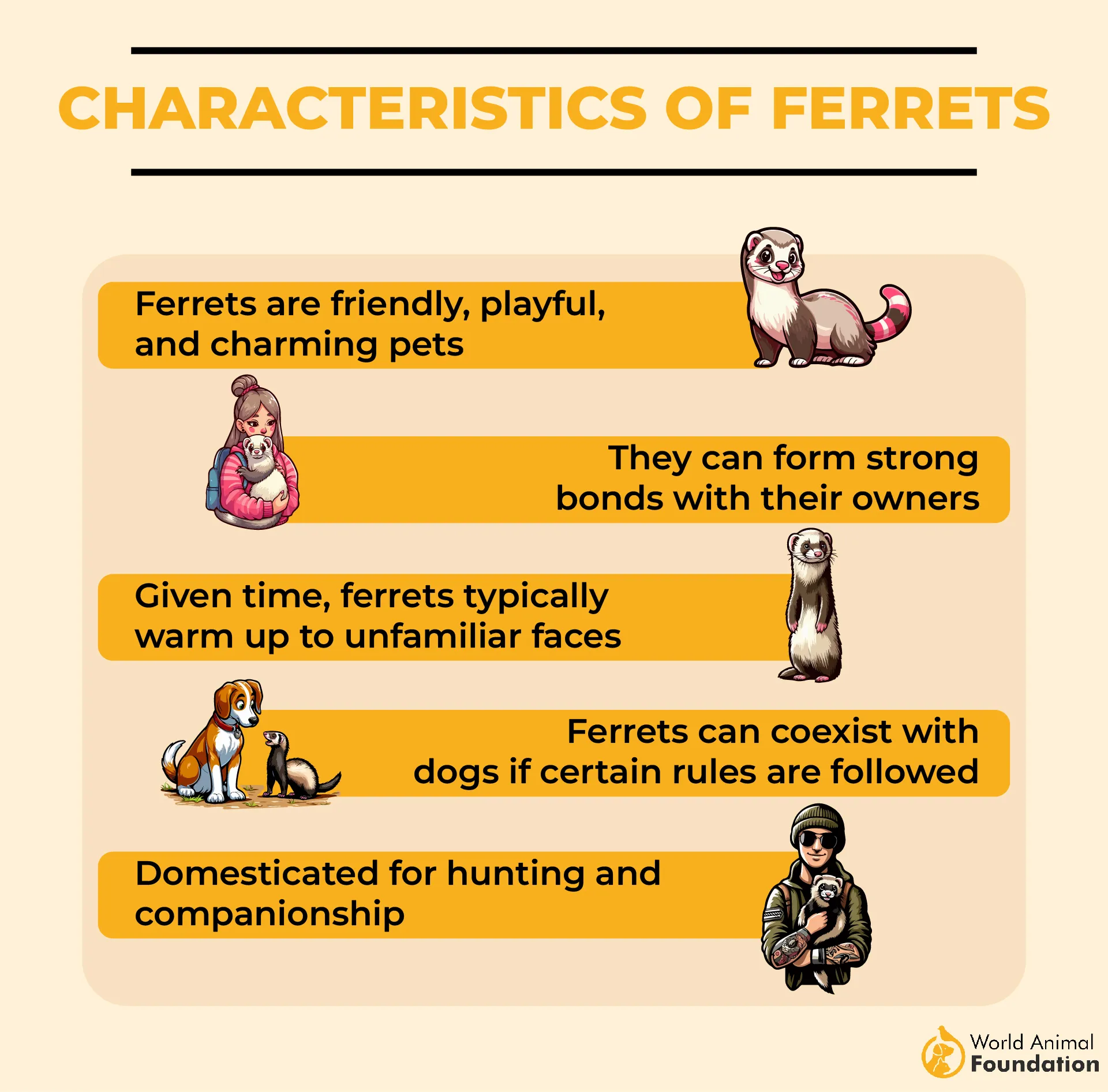
However, you should still introduce them carefully and watch for any signs of stress. Health issues can make even fine-tempered dogs irritable, so regular vet checkups prevent them from falling sick.
5. Pembroke Welsh Corgi
Stocky frame, smart mind, and a tail that barely clears the floor make the Corgi zoom at the ferret’s height. First meetings feel natural with animals eye-to-eye in the hallway. That historic mix of herder and rat catcher can send the dog’s nose twitching when ferrets dart under furniture.
Your job involves channeling the Corgi’s instinct to steer rather than snap. Those playful nudges can become safe signals that both pets understand. These dogs can live as best friends with ferrets when introduced on neutral ground.
Safety measures
Place low tunnels around the house as escape routes for ferrets
Teach calm nose-touch cues between the ferret and the do
Monitor other signs of over-arousal, like stiff posture
Add gentle tug sessions after mixed play to drain energy
As PetMD puts it, Corgis have that classic herding behavior that leans toward guiding rather than aggressive actions. They eagerly learn treat-based cues and can determine appropriate behavior quickly. Unlike cats, who might hunt ferrets, these dogs are usually protective rather than predators.
6. Border Collie
Border Collies decide faster than most dogs move, and they move fast. Their laser-focused prey eye can lock onto quick motion before you finish a sentence.
Weeks of patient shaping teach them to release that focus on command. When you funnel that brainpower into puzzles, the dog learn that chasing beats shadowing ferrets.
These dogs require serious commitment from you. Their wild heritage creates strong hunting instincts that need constant management. However, their intelligence becomes an asset when properly directed toward appropriate activities.
Safety measures
Burn energy first with two-hour-long outings daily
Dogs and ferrets should interact under supervision
Limit play to ten minutes initially with the ferrets
Watch for early warning signs like freeze-and-stare behavior
The strong handler bond keeps Border Collies constantly checking your face for guidance. They respond to verbal break cues and thrive on problem-solving activities. These dogs can live with ferrets but need more supervision than most animals.
7. Australian Shepherd
AKC calls them a “tough ranch dog,” a perfect name for a dog whose brain runs like a busy switchboard, always noticing movement and filing new patterns.
Your ferret and dog partnership hinges on giving that mind plenty to do before playtime starts. When mental needs are met, the Australian Shepherd’s instincts to gather rather than kill can protect smaller animals.
You’ll still need to watch your ferret and dog for moments when lively herding flips into real prey focus. Consistent mental outlets turn those sharp eyes into a living security system. These dogs can determine a friend from a wild animal when properly trained.
Safety measures
Schedule two 30-minute brain workouts daily using puzzle toys
Bring ferrets only after the dog has met its exercise quota
Use low barriers around doors as visual fences during interaction with ferrets
Watch body language closely and end sessions at the first warning signs
The herding instinct works in your favor here. These dogs respond quickly to verbal markers and naturally scan you for cues. Wild instincts remain strong, though, so consistent training across weeks helps them live peacefully with ferrets, cats, and other animals under one roof.
Conclusion
Your ferret and dog can live as friends when you establish clear routines, watch for warning signs like fixed stares or sudden stillness, and never leave the animals unsupervised.
Keep the ferret’s cage elevated, schedule regular hospital visits for health monitoring, and always end interactions before excitement peaks to ensure the animals live their best lives.


